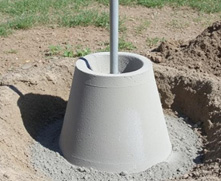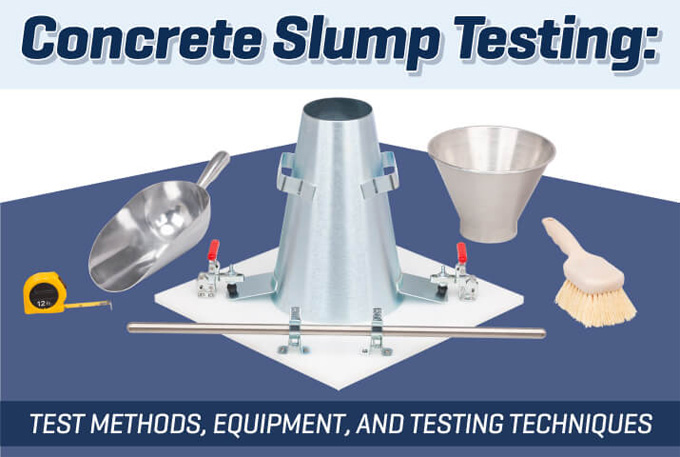
How to Find Volume of a Slump Cone

The slump test of the concrete helps to measure the workability the fluidity of the fresh concrete mix. The workability of the concrete mix refers to the ability of the concrete to be mixed easily, transported and placed without segregation. The slump test has been performed by placing the fresh concrete into a conical metal mould, which is known as the slump cone. After that, the mould has been removed to observe the vertical settlement of he concrete.

The slump test of the concrete is easy and quick to perform, and cost-effective, which helps to check the consistency of the concrete. In addition, the slump test of the concrete also helps to detect the variations in the water content of the concrete, the quality of the aggregates and the other factors that influence the performance of the concrete.
Equipment used in the slump test of concrete
Slump cone
The slump cone has been made with seamless metal. The slump cone is lighter and sturdier, which helps to resist dents and other deformations while remaining rust-free.
Base plate
The base plates are the optional equipment in the slump test, which helps to make this slump test easier to perform and helps to provide more consistent results. The base plate used in the slump test comes in the form of a ready-made and non-absorbent flat surface, which helps to secure the foot tabs of the slump cone. Thus, the base plate allows the free movement of the slump cone.
Sample scoops
The sample scoops help to allow even sample distribution, along with enough capacity to reduce the repeated sampling of fresh concrete.
Tamping rods
The tamping rods help to comply with the test standards and also help to feature the correct diameter, along with a hemispherical tip for the proper sample consolidation. Each of the tamping rods has enough length, which helps to ensure the required penetration during rodding.
Slump cone filling funnel
This equipment helps to fill the slump cone while reducing the waste.
Measuring devices
The measuring devices used in the slump test of the concrete are usually the tape measures, but rulers, along with a minimum length of 12 inches and ¼ inch.
Learn about the importance of the slump test of concrete
The slump test of the concrete includes air content, temperature, unit weight and the moulding of the laboratory samples for the strength test of the concrete. The slump test of the concrete also helps to document the properties of the concrete. The slump test for the fresh concrete has been performed immediately before the placement of the concrete and repeated periodically throughout the pouring process o document the consistency of the product.
Applications of the slump test of the concrete
➢ The slump test has been used to ensure the uniformity of the different batches of similar concrete under different field conditions. In addition, the slump test of the concrete helps in ascertaining the effects of the plasticisers on their introduction.
➢ The slump test for the concrete is also very useful on the construction site as a check on the day-to-day or hour-to-hour variation in the materials that are being fed into the concrete mixer.
➢ Too high or too low a slump helps to provide immediate warning and helps to enable the mixer operator to remedy the situation.
Process of estimating the volume of the slump cone
The estimation of the exact volume of the slump cone allows a more precise estimation of the slump in the concrete. The procedure is essential to control the workability of the concrete and also helps to maintain the water-cement ratio of the concrete mix. By detecting the exact volume of the slump cone, the variations in the concrete mix proportions have been estimated, which influence the strength and longevity of the concrete structure. To find out the volume of the slump cone, the physical dimensions of the slump cone should be understood, which are as follows:
1. Top diameter of the slump cone
2. Bottom diameter of the slump cone
3. Height of the slump cone
The slump cone is truncated conical in shape, which indicates having different circular cross-sections at the top and the bottom of the slump cone. The formula for estimating the volume of the slump cone is:
1/3 πh ( r21 + r1r2 + r22 ) = V
In this case,
V refers to the volume of the slump cone
π refers to Pi (3.14159)
To learn more, watch the following video tutorial.
Video Source: TeleTraining
h refers to the height of the slump cone
r1 refers to the radius of the top of the slump cone
r2 refers to the radius of the base of the slump cone.


